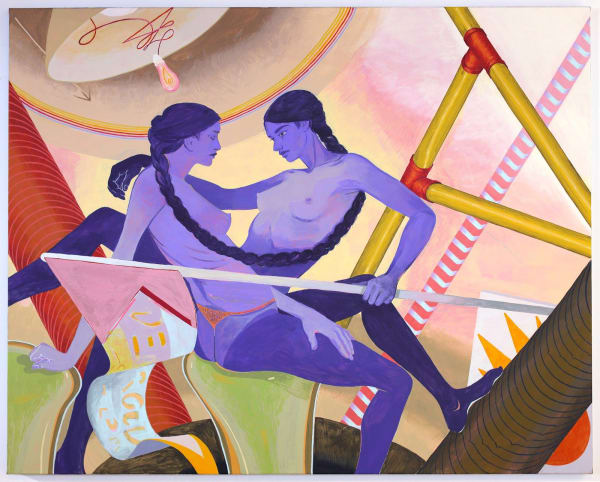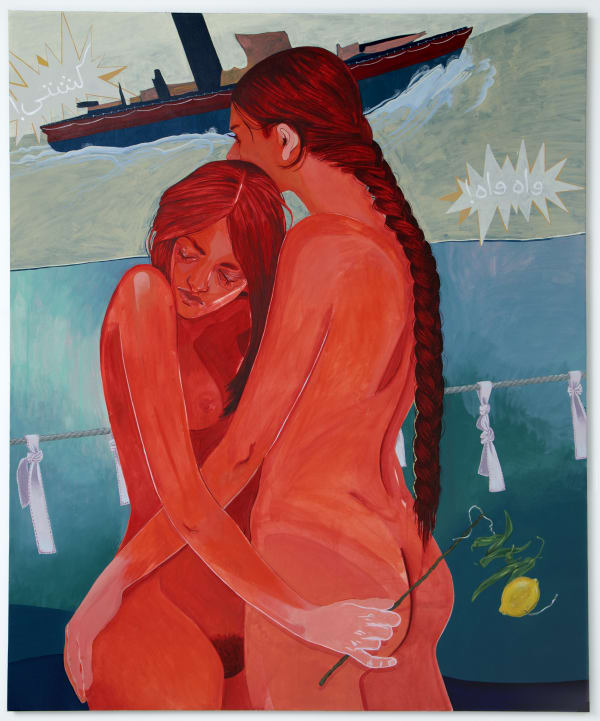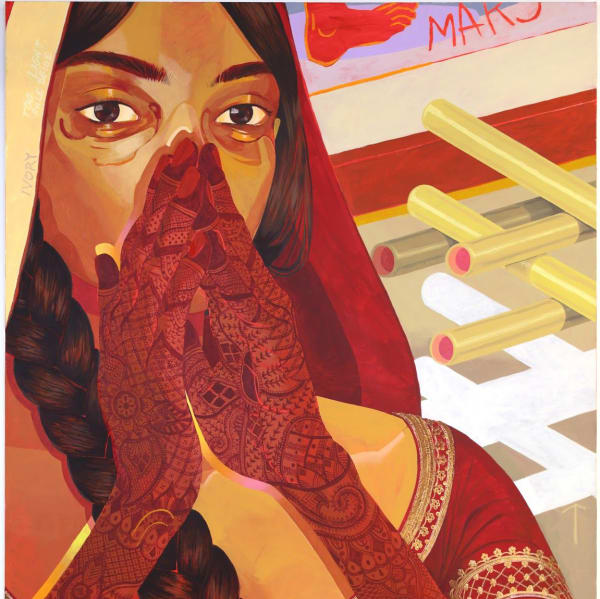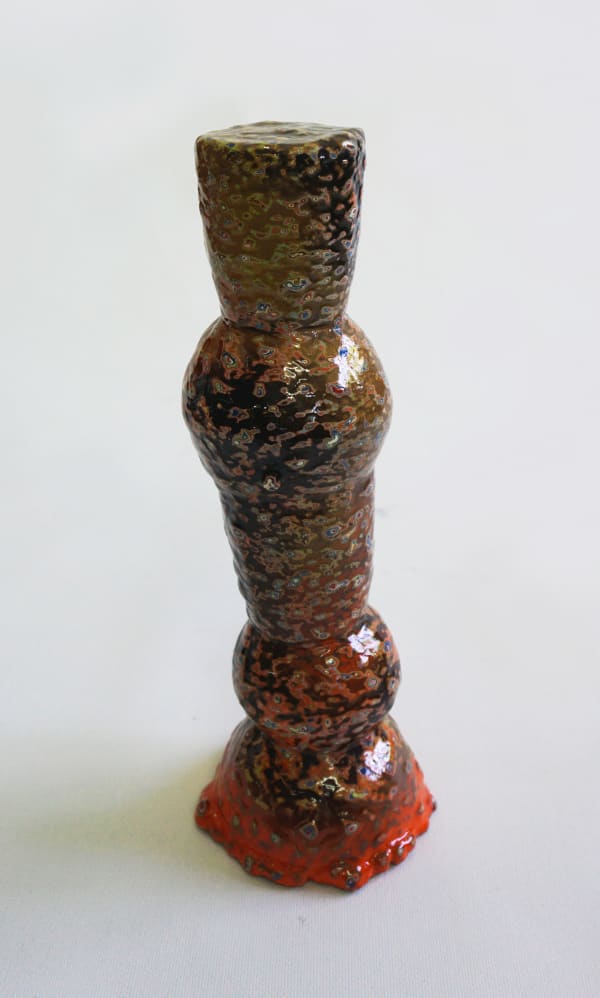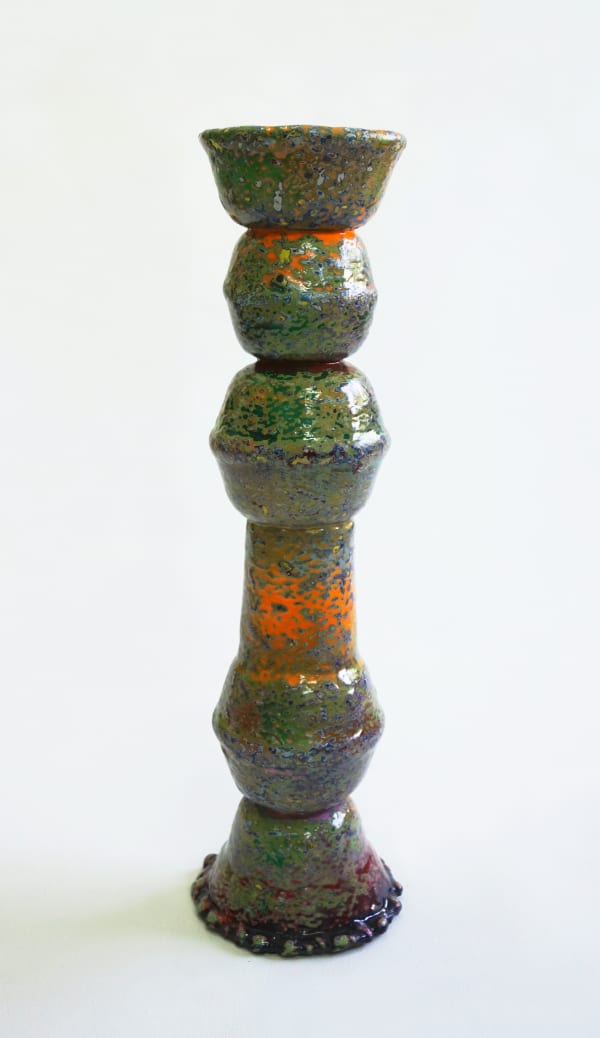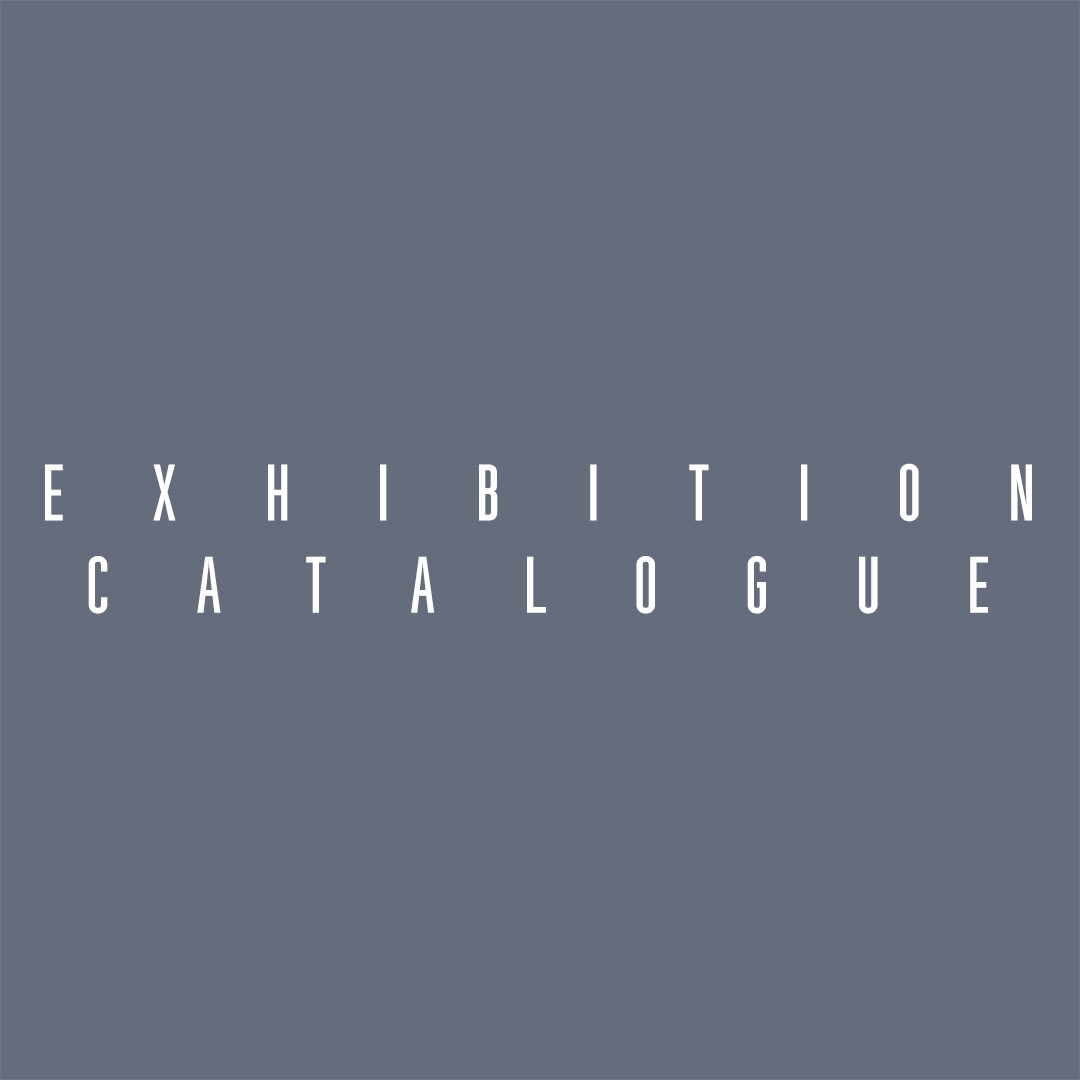HAFFENDI ANUAR & NADIA WAHEED: FOR THE FEW AND THE MANY
Our latest exhibition, For the Few and the Many, presents the paintings of Pakistani-born, Saudi-American artist Nadia Waheed with a sculptural presentation by Malaysian sculptor Haffendi Anuar.
Nadia Waheed has lived in places such as Islamabad, Paris, Sydney, Cairo, and the USA. In fact, she hasn’t lived in the same place for longer than four years. As such, the notion of displacement, vulnerability and identity has undoubtedly woven itself into her paintings. She states that the figures in her paintings are herself but also others: “The women are [versions of] me, but also others. They’re two women, but also one woman…women contain multitudes”, she states.
In a similar vein, the works of Malaysian sculptor Haffendi Anuar speak to a similar notion of identity in flux although his concern is less about the ‘self’ and more about the external environment. Like Waheed, Anuar has lived in London, Rhode Island, and China, and this desire to comprehend one’s place in the world has for Anuar manifested in the form of the piloti. Pilotis are structural columns made to lift a building from the ground, and/or above water. As such, they function duplicitously: by both providing the connection to a foundation but also by offering a detachment from said foundation. In the same instance, both artists are talking about singularity and multiplicity.
Waheed’s work explores ideas of selfhood, conflict, and desire for detachment. In many works, she appears almost levitating, withouth foundation (quite literally the antithesis to Anuar’s masculine totems), where female bodies are suspended in midair, braids, limbs, and legs intertwined. Pakistani women are painted in bold colours (hiding their true skin colour), with cultural signifiers such as bridal mehndi, razai blankets, and long braided hair being the elements that form the individuals’ identities. This particular body of work paints an image of quiet and enduring resilience; uncelebrated and invalidated effort to confront and establish identity. This feeds into an overarching exploration: a questioning of what ‘womanhood’ means given the current cultural climate. With grandiose conflicts like Brexit and Trump, (the latter particularly relevant for a young American woman), and the art-world going through a reevaluation of women’s and ethnic perspectives, these works (despite their often saccharine hues) offer stark and poignant perspectives of our current political climate.
For Anuar, his Asian heritage has fed into an interest in the use of these architectural elements in Southeast Asian architecture; in this part of the world, they are used to elevate buildings from floods and dangerous ground-dwelling animals such as snakes and scorpions. Like Waheed, the work finds meaning through conflict. But unlike Waheed, Anuar’s concern is thrust outward, where geographies, cities, and infrastructure become metonym for custom, process, and culture. Through a repetitive (somewhat ritualistic) method, the artist paints each individual piloti with up to one hundred layers of paint; over the course of weeks, he will apply layers with an almost religious-like devotion: one layer in the morning, one layer in the afternoon. This temporal element further arises through Anuar’s hand-sanding of the surface, exposing the inner layers; the effect is almost like a faux-antique, where the passage of time’s corrosion and patination of the surface has been replicated. The sculptures’ original form as steadfast columns (used to hold heavy buildings) have been diminished–now, placed on the floor, they look like small, vulnerable lifeforms. Combined with the work of Waheed, we are called to question how such personal moments can become transformed into metaphoric or grandiose gestures, and conversely how the monumental can be reimagined as something intimate, personal, and ritualistic.
* In conversation with Tribeza, Austin Texas. Click HERE
HAFFENDI ANUAR
Based in Kuala Lumpur, but having lived in London, Rhode Island, and China, Anuar’s works are primarily based around the varied landscapes that surround him. Sculpture’s ineluctable link to the landscape (through movements such as land art and, more simply, public sculptures), allow the artist to explore notions of modernisation, urban fluctuation, and architectural vernaculars. An example would be his Pilotis series, which appropriate the forms of traditional columns found supporting Malaysian buildings. Brightly coloured like street art murals, the sculptures explore not just the physicality of these architectural elements, but the immaterial elements of them that work to form the urban landscape–such as the power monuments and skyscrapers display when built alongside traditional buildings.
Haffendi Anuar (b. 1985, Seremba, Malaysia) lives and works in Kuala Lumpur, Malaysia. He studied BA Fine Art at Central Saint Martins, London, UK. Solo exhibitions include: Midday Stanza, Richard Koh Fine Art, Singapore (2019); Migratory Objects, Volta New York, New York City (2017); Elephant Utopia, Future Section, Art Taipei, Taipei City (2015); and M13, Richard Koh Fine Art, Kuala Lumpur (2015). Group exhibitions include Summer of Love, J:Gallery x Design Republic, Shanghai (2018); Flotsam, Jetsam, Lagan and Derelict, A.I. Gallery, London, UK (2018); New Look, Christine Park Gallery, New York, USA (2018); and head heap heat, Institute of Contemporary Arts, Singapore (2018).
NADIA WAHEED
Nadia Waheed’s works are very often autobiographical. Born in Saudi Arabia, the artist originally hails from Karachi, Pakistan, but has lived in places such as Islamabad, Paris, Sydney, Cairo, and the USA. In fact, she hasn’t lived in the same place for longer than four years. This movement–and particular the stark cultural shifts she has experienced–have significantly affected her artistic trajectory, placing her in the position of having experienced vastly differing perceptions of female selfhood. Boldly coloured and often densely patterned in areas, Waheed’s paintings are as visually eclectic as her worldly experiences. The figures depicted are vehicles upon which the artist builds symbols and metaphors pertaining to her Pakistani heritage, her westernisation, and explorations of what she herself calls the ‘brown female nude’ –a taboo subject in many cultures around the world today. By painting her subjects’ skin in fanciful colours, the artist questions what it is that designates race. ‘What really signifies one’s identity,’ questions Waheed, ‘do they have to be painted brown to be brown?’ Cultural signifiers are rife in her paintings: bridal mehndi, long braided hair, patterned razai blankets. But these images are often stripped down, forcing us to read behind the more overt symbols, often unearthing a dark narrative. In Odalisque, for instance, an image of a MOAB* hangs on the back wall, signifying impending doom–a fact made pertinent by the knowledge that the noun odalisque means ‘female slave or concubine’. In Nirvana, the arabic word for ‘Aisha’ is scribbled across the woman’s veil, which means “She who lives”, which references what Waheed herself states in a 2019 interview where she claims that the figures in the paintings are “versions of me, but also others. They’re two women, but also one woman. They’re everyone and no one all at once. Symbols — but also something real”. Elements such as these, say Waheed, ‘are metaphors for the constraints that come with the expectation of women in Arabic culture; things may look innocuous at first, but on second glance take on a darker context’. On a more simpler, surface note – the works, abundant with cool blues and pastel pinks, are strikingly beautiful to look at, housing a much deeper mystery beyond their calming appearances.
*Mother of All Bombs
NADIA WAHEED (b. 1992, Al Khobar, Eastern Province, Saudi Arabia) lives and works in Austin, TX. She graduated with a BFA in Painting & Drawing from The School of the Art Institute of Chicago in 2015. Solo exhibitions include: For the Few and the Many, BEERS London, London UK (2019); Notes From A Windowless Room, Raw Paw, Austin, TX (2019), See Me Where I Am, The Museum of Human Achievement, Austin, TX (2019), Eight Chicks in a Pod, Bolm Studios, Austin, TX (2018). Group exhibitions include: I Heart Paint, Patel Gallery, Toronto, Canada (2019), Hear Me Out, ARC Victoria, Melbourne, Australia (2017); and Closing Party, The Space, Sydney Australia (2017). She has a future group exhibition scheduled for July with Thierry Goldberg, New York, NY.


